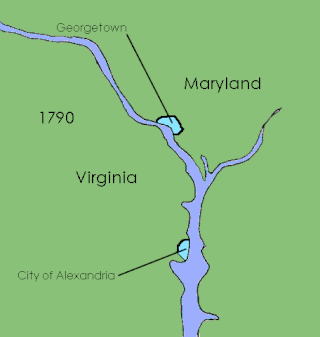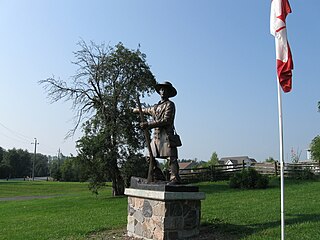Related Research Articles

The Constitution of Canada is the supreme law in Canada. It outlines Canada's system of government and the civil and human rights of those who are citizens of Canada and non-citizens in Canada. Its contents are an amalgamation of various codified acts, treaties between the Crown and Indigenous Peoples, uncodified traditions and conventions. Canada is one of the oldest constitutional monarchies in the world.

The Emancipation Proclamation, officially Proclamation 95, was a presidential proclamation and executive order issued by United States President Abraham Lincoln on January 1, 1863, during the American Civil War. The Proclamation changed the legal status of more than 3.5 million enslaved African Americans in the secessionist Confederate states from enslaved to free. As soon as slaves escaped the control of their enslavers, either by fleeing to Union lines or through the advance of federal troops, they were permanently free. In addition, the Proclamation allowed for former slaves to "be received into the armed service of the United States".

The Riot Act, sometimes called the Riot Act 1714 or the Riot Act 1715, was an act of the Parliament of Great Britain which authorised local authorities to declare any group of 12 or more people to be unlawfully assembled and order them to disperse or face punitive action. The act's full title was "An Act for preventing tumults and riotous assemblies, and for the more speedy and effectual punishing the rioters", and it came into force on 1 August 1715. It was repealed in England and Wales by section 10(2) and Part III of Schedule 3 of the Criminal Law Act 1967. Acts similar to the Riot Act passed into the laws of British colonies in Australia and North America, some of which remain in force today.
The Second Dáil was Dáil Éireann as it convened from 16 August 1921 until 8 June 1922. From 1919 to 1922, Dáil Éireann was the revolutionary parliament of the self-proclaimed Irish Republic. The Second Dáil consisted of members elected at the 1921 elections, but with only members of Sinn Féin taking their seats. On 7 January 1922, it ratified the Anglo-Irish Treaty by 64 votes to 57 which ended the War of Independence and led to the establishment of the Irish Free State on 6 December 1922.

In the United States, an executive order is a directive by the president of the United States that manages operations of the federal government. The legal or constitutional basis for executive orders has multiple sources. Article Two of the United States Constitution gives presidents broad executive and enforcement authority to use their discretion to determine how to enforce the law or to otherwise manage the resources and staff of the executive branch. The ability to make such orders is also based on expressed or implied Acts of Congress that delegate to the president some degree of discretionary power. The vast majority of executive orders are proposed by federal agencies before being issued by the president.

This section of the Timeline of Quebec history concerns the events in British North America relating to what is the present day province of Quebec, Canada between the time of the Constitutional Act of 1791 and the Act of Union 1840.

Francis Cornwall Sherman served as Mayor of Chicago, Illinois, for three terms as a member of the Democratic Party.
The Proclamation of Neutrality was a formal announcement issued by U.S. President George Washington on April 22, 1793, that declared the nation neutral in the conflict between France and Great Britain. It threatened legal proceedings against any American providing assistance to any country at war.

The District of Columbia retrocession is the act of returning some or all of the land that had been ceded to the federal government of the United States for the purpose of creating its federal district for the new national capital of the United States, the City of Washington. The land was originally ceded to the federal government by Virginia and Maryland in 1790. After moving through various stages of federal and state approval, the Virginia portion was eventually returned in March 1847. The Maryland portion still constitutes the District of Columbia today, but at various times some have proposed retroceding it, in part or in whole, to address issues related to the voting rights of residents of the District of Columbia.
De Jonge v. Oregon, 299 U.S. 353 (1937), was a case in which the Supreme Court of the United States held that the Fourteenth Amendment's due process clause applies freedom of assembly against the states. The Court found that Dirk De Jonge had the right to speak at a peaceful public meeting held by the Communist Party, even though the party generally advocated an industrial or political change in revolution. However, in the 1950s with the fear of communism on the rise, the Court ruled in Dennis v. United States (1951) that Eugene Dennis, who was the leader of the Communist Party, violated the Smith Act by advocating the forcible overthrow of the United States government.

The government of Alabama is organized under the provisions of the 1901 Constitution of Alabama, the lengthiest constitution of any political entity in the world. Like other states within the United States, Alabama's government is divided into executive, judicial, and legislative branches. Also like any other state, these three branches serve a specific purpose in terms of power.

The Constitution of the State of Illinois is the governing document of the state of Illinois. There have been four Illinois Constitutions; the fourth and current version was adopted in 1970. The current constitution is referred to as the "Constitution of Illinois of 1970" or less formally as the "1970 Constitution." The document is still referred to as the "Constitution of Illinois of 1970" even though there have been amendments to it after 1970. Important features of the 1970 Constitution include the creation of home rule powers for larger municipalities and other units of local government.
Irish republican legitimism denies the legitimacy of the political entities of the Republic of Ireland and Northern Ireland and posits that the pre-partition Irish Republic continues to exist. It is a more extreme form of Irish republicanism, which denotes rejection of all British rule in Ireland. The concept shapes aspects of, but is not synonymous with, abstentionism.

Elizabeth II was proclaimed queen throughout the Commonwealth after her father, King George VI, died in the early hours of 6 February 1952, while Elizabeth was in Kenya. Proclamations were made in different Commonwealth realms on 6, 7, 8, and 11 February. The line of succession was identical in all the Commonwealth realms, but the royal title as proclaimed was not the same in all of them. Accession was followed sixteen months later by the Coronation of Elizabeth II at Westminster Abbey in London on 2 June 1953.

The Assembly of the Six Counties was an assembly of Patriote leaders and approximately 6,000 followers held in Saint-Charles, Lower Canada on October 23 and October 24, 1837, despite the June 15 Proclamation of the government forbidding public assemblies.

Coolamon Shire is a local government area in the Riverina region of south-western New South Wales, Australia. The Shire comprises 2,433 square kilometres (939 sq mi) and is located adjacent to the Newell Highway and the Burley Griffin Way. The Shire includes the towns of Coolamon, Ganmain, and Ardlethan, and the villages of Matong, Marrar, and Beckom.

The Loyal War Governors' Conference was an important political event of the American Civil War. It was held at the Logan House Hotel in Altoona, Pennsylvania, on September 24 and 25, 1862. Thirteen governors of Union states came together to discuss the war effort, state troop quotas, and the ultimate support of President Abraham Lincoln and his Emancipation Proclamation. The leaders also suggested the removal of General George B. McClellan as commander of the Army of the Potomac. The meeting was established and hosted by Pennsylvania Governor Andrew Gregg Curtin, who was a staunch defender of the war effort and Lincoln Administration policies. Ultimately, the event provided Lincoln much-needed support from the Northern states.

The Secretary of State of West Virginia is an elected office within the U.S. state of West Virginia state government. The secretary of state is responsible for overseeing the state's election process, including voter registration and election results reporting.

Jesse Lloyd was the founder of Lloydtown, Ontario and a leader in the Upper Canada Rebellion of 1837. Born in Springfield Township, Pennsylvania, he was the third son of Quakers William Lloyd and Susannah Heacock. The Lloyds, who were United Empire Loyalists, possibly came to Canada at Niagara in 1788 but soon returned to the United States. They likely immigrated permanently to Upper Canada in 1808. Upon arrival, they crossed the Niagara gorge and migrated north to settle in the 10th concession of King Township.
References
- Jean-Paul Bertrand. (1988) Assemblées publiques, résolutions et déclarations de 1837-1838, Montréal: VLB Éditeur and the Union des écrivains québécois, 304 pages ISBN 2-89005-313-X